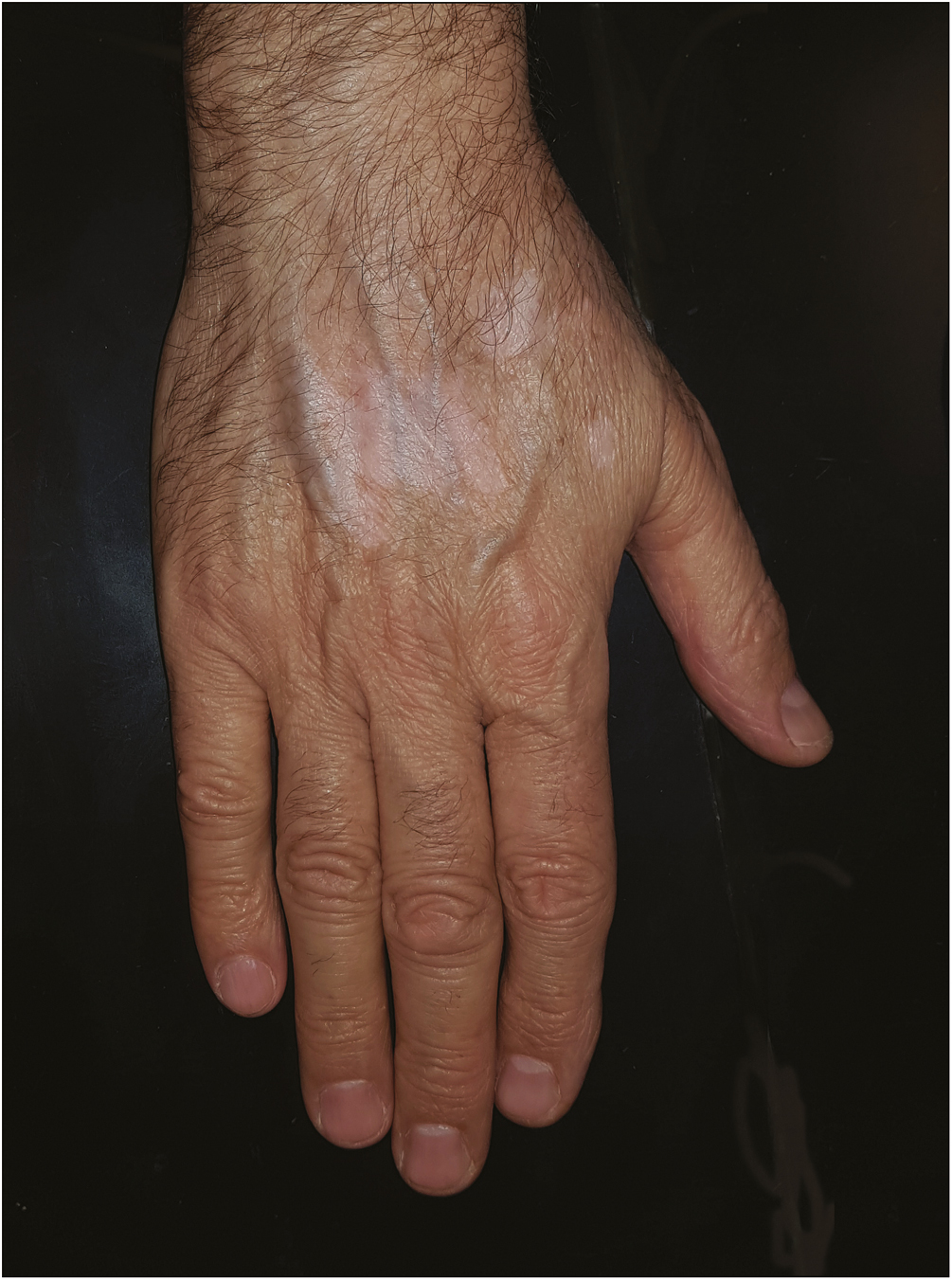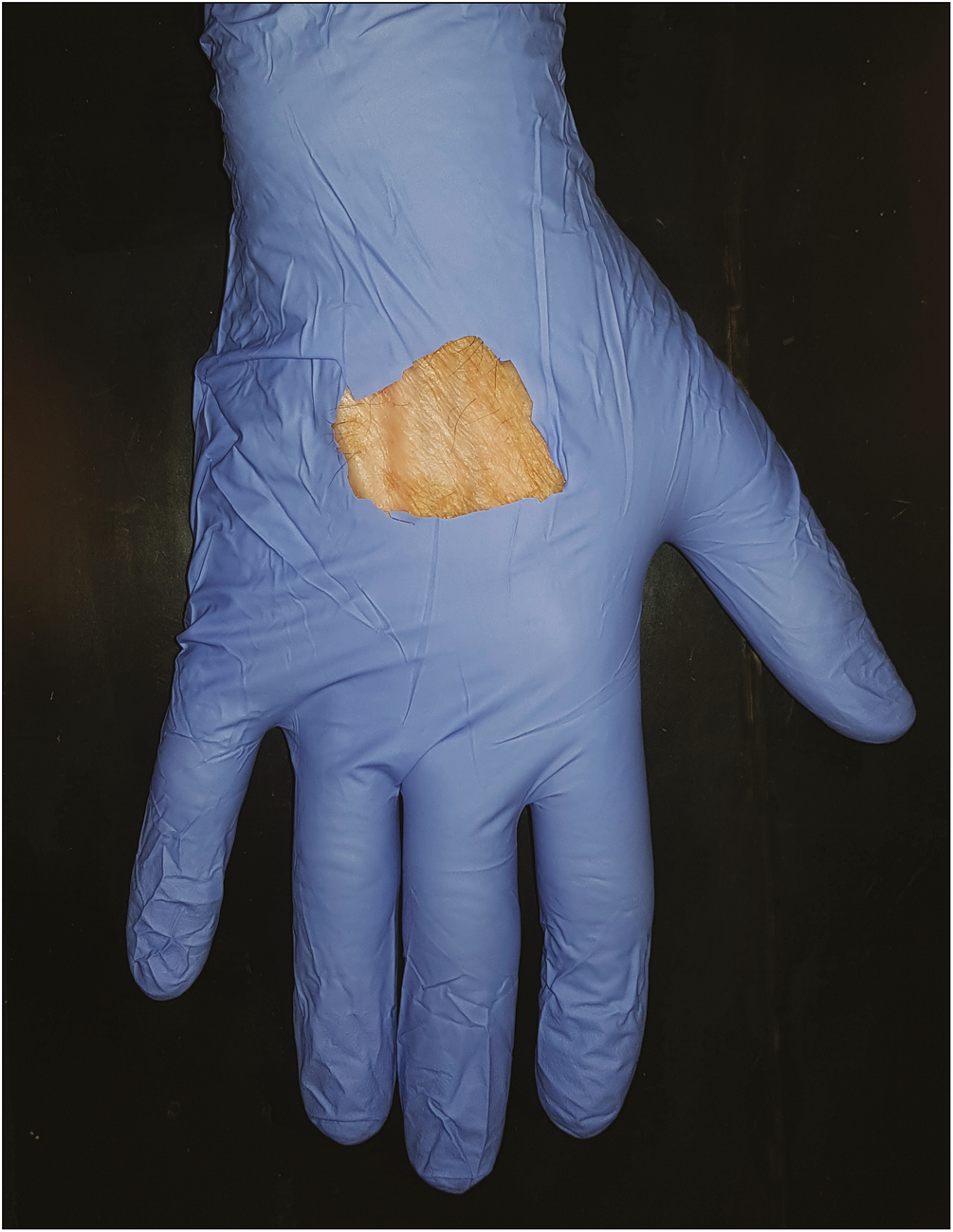Translate this page into:
Window Approach in Conventional Phototherapy to Protect Non-lesional Skin
Address for correspondence: Dr Feroze Kaliyadan, Department of Dermatology, College of Medicine, King Faisal University, Al Ahsa 61982, Saudi Arabia. E-mail: ferozkal@hotmail.com
This is an open access journal, and articles are distributed under the terms of the Creative Commons Attribution-NonCommercial-ShareAlike 4.0 License, which allows others to remix, tweak, and build upon the work non-commercially, as long as appropriate credit is given and the new creations are licensed under the identical terms.
This article was originally published by Wolters Kluwer - Medknow and was migrated to Scientific Scholar after the change of Publisher.
Abstract
Abstract
We propose the use of protective coverings—gloves, socks, or clothing, with windows cut out into them, to ensure that the phototherapy targets only the affected areas.
Keywords
Excimer
hand and foot unit
NBUVB
phototherapy
targeted phototherapy
Protection of normal skin during phototherapy, when not using targeted devices, is an issue that has not been addressed much when we did a literature search. Often the undesired effects on the non-lesional skin limit therapeutic delivery to the affected skin. Use of a physical sunscreen is one option, but is cumbersome for use each time, especially if the affected area itself is smaller in size. Normal recommendation for protection of unaffected skin includes the use of sunscreens or shields, especially for sensitive areas.[1]
We propose the use of protective coverings—gloves, socks, or clothing, with windows cut out into them, to ensure that the phototherapy targets only the affected areas. Creating these windows is simple and the same covering material can be reused multiple times by the same patient [Figures 1 and 2].

- Vitiligo over the dorsum of the hands

- Windows cut out in nitrile gloves to ensure that the treatment is targeted to the affected area
Al Jasser et al.[2] described the use of custom paper shields to prevent perilesional hyperpigmentation after excimer laser treatment for vitiligo. The same principle can be used to protect normal skin of the patient undergoing phototherapy in general, especially for localized lesions on the hand and feet with hand and foot units. For the hand, gloves could be used and for the feet socks could be used. It would also be possible to cut out windows into tight fitting clothing while administering phototherapy for whole body lesions. This could help administer higher doses to the affected area without affecting normal skin, thereby simulating targeted phototherapy. The same principle could be used for PUVASOL, using stretchable garments which can fit the body snugly and in which windows can be created. A layer of vaseline over the normal skin will ensure better adherence of the garment to the unaffected skin. We are of the opinion that this could be a value addition to poor resource centers that do not have access to targeted phototherapy machines that are expensive. We suggest larger studies to evaluate utility and effectiveness of this method.
Declaration of patient consent
The authors certify that they have obtained all appropriate patient consent forms. In the form the patient(s) has/have given his/her/their consent for his/her/their images and other clinical information to be reported in the journal. The patients understand that their names and initials will not be published and due efforts will be made to conceal their identity, but anonymity cannot be guaranteed.
Financial support and sponsorship
Nil.
Conflicts of interest
There are no conflicts of interest.
REFERENCES
- Custom paper shield to prevent perilesional hyperpigmentation after excimer laser treatment for vitiligo. J Am Acad Dermatol. 2018;79:e65-6.
- [Google Scholar]






